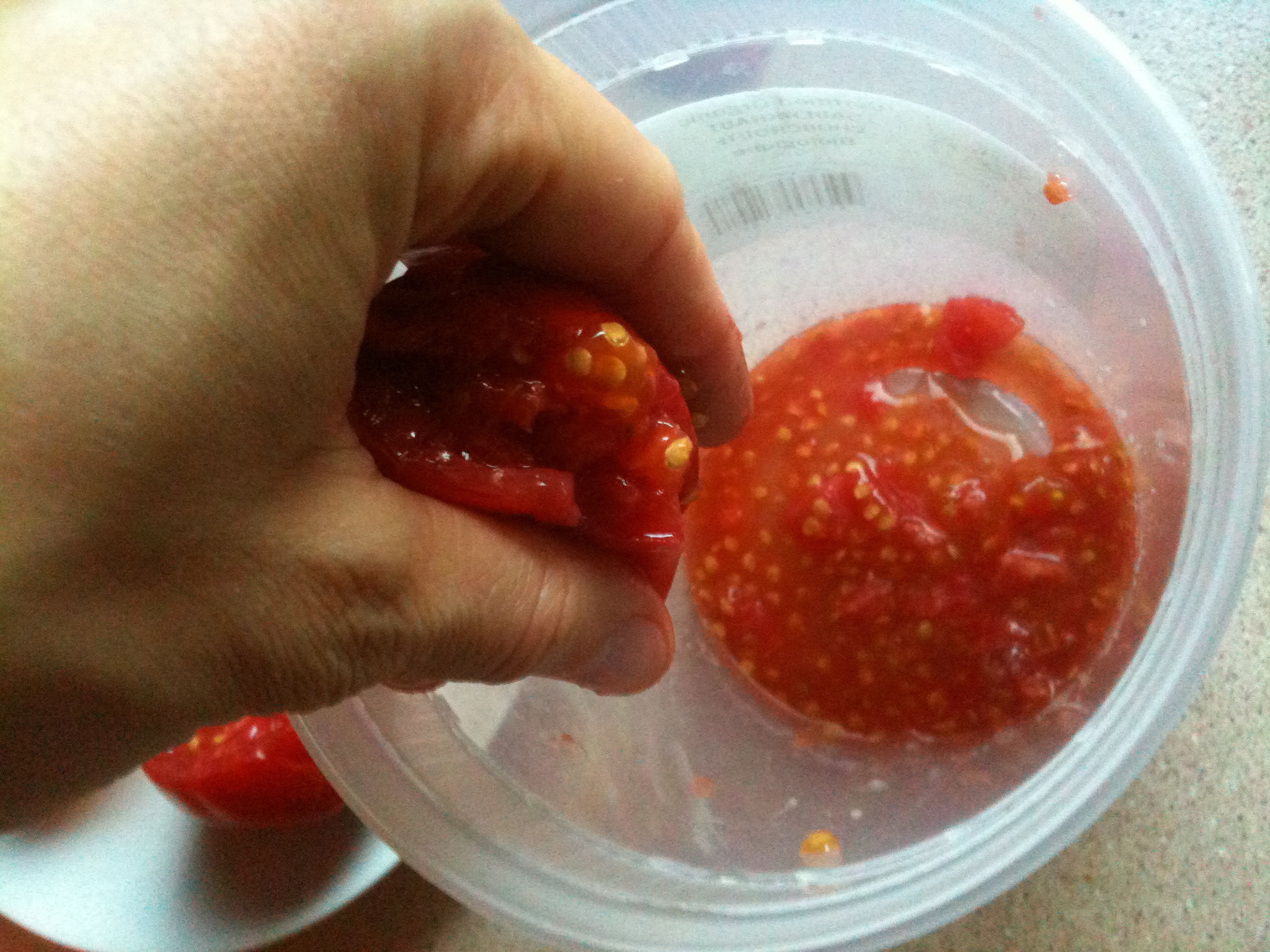Saving tomato seeds is an easy and fun activity, plus it also saves you some money. Follow the steps below to save seeds from the healthiest and tastiest tomato for next year.
Choose Tomatoes
The first step when saving tomato seeds is to choose right tomatoes. Open pollinated or heirloom tomatoes are best to save seeds from. These are the tomato varieties which, when grown from the seeds, maintain the characteristics of the parent plant. Select tomatoes from the plant that produced the healthiest and tastiest fruit this season.
Extract seeds
After having selected the best tomato on your vine, extract seeds from it. Start by thoroughly washing the tomatoes. Then using a sharp knife, cut the tomato in half across its middle and scoop out seeds with the help of a spoon. You can also use your finger to scrape out the seeds, but make sure your hands are well washed. Place the seeds in a small bowl or a jar with wide mouth and add enough water to the bowl to make a soupy consistency. Gently stir the mixture with a plastic spoon to loosen the seeds from the pulp.
Fermentation
Now cover the container with a plastic wrap and poke small hole in it with a fork or with the tip of the knife. These small holes will allow air circulation, which helps fermentation. Now set the container in a safe, warm place that does not receive direct sunlight for 2 to 3 days. Ideal temperature for the fermentation process to take place is between 70 and 80 degrees Fahrenheit. The reason behind fermenting tomato seeds is to get rid of gelatinous material surrounding the seeds which prevents them from sprouting inside the fruit.
Rinse seeds
After a white, foamy mould has formed on the top of the seeds, remove the seeds from the liquid and rinse them thoroughly to stop the fermentation process. If you will allow the seeds to remain in the liquid for long, they may begin to sprout in the container. To rinse the seeds, fill the container with plain water and then stir the mixture several times. Now let the seeds sit for 10 to 20 seconds. Healthy seeds will sink to the bottom of the container while bad seeds will continue floating at the top. Remove the bad seeds from the top and repeat the rinsing process until all the pulp and mould is rinsed from the seeds.
Dry and store seeds
When seeds are thoroughly rinsed, run them through a sieve and spread them on a paper plate or glass dish in a single layer. Place the seeds in a warm, dry area, away from direct sunlight. Seeds will dry completely in 1 to 2 weeks. Once dried, store the seeds in zipped plastic bags containing silica gel packets.





No Comment